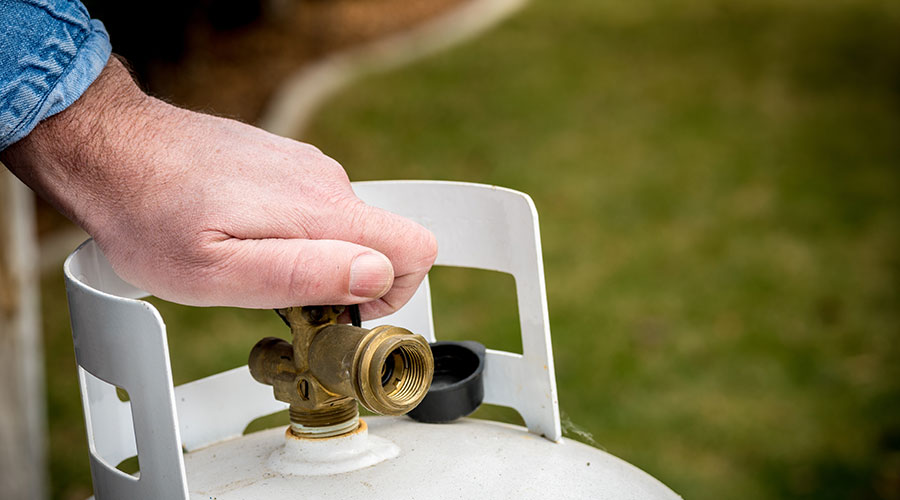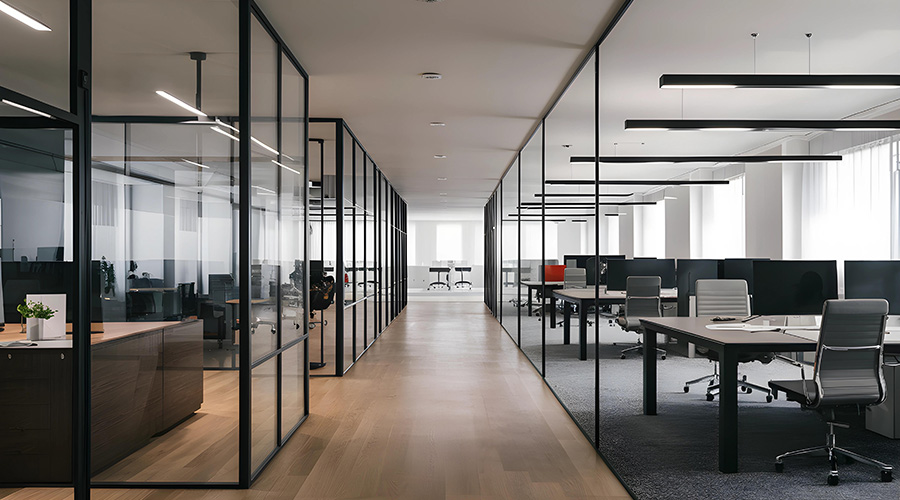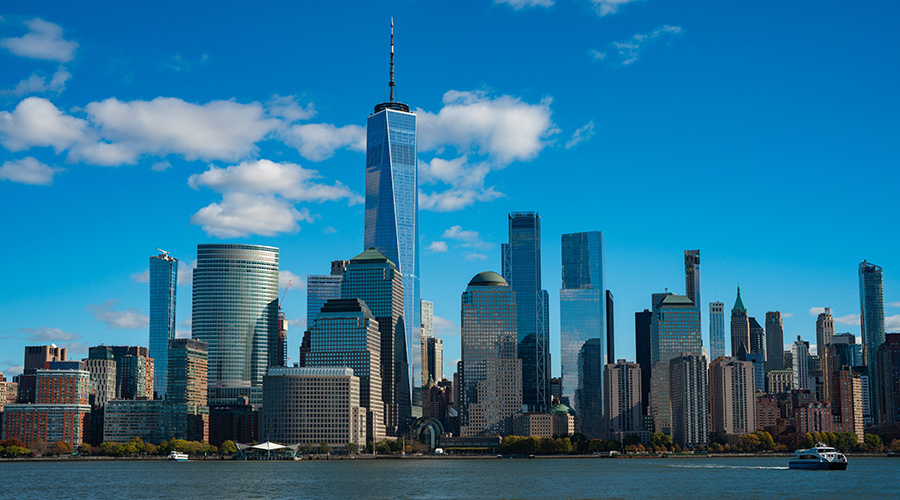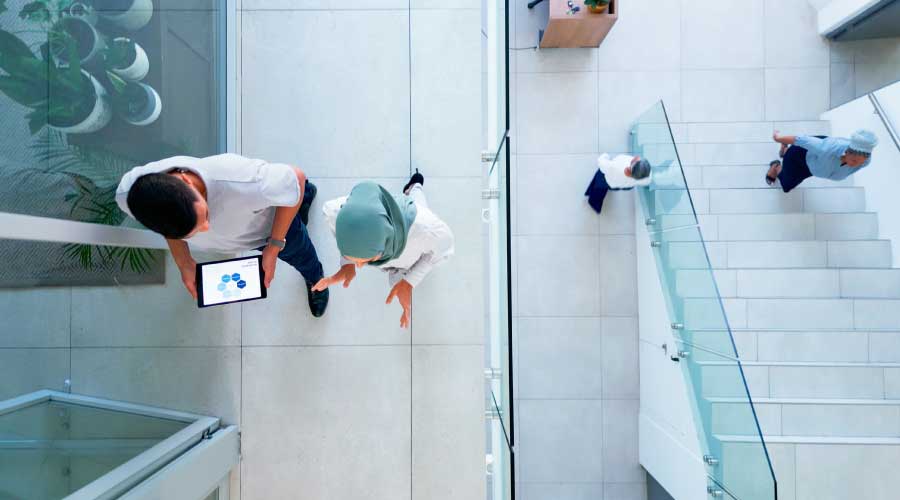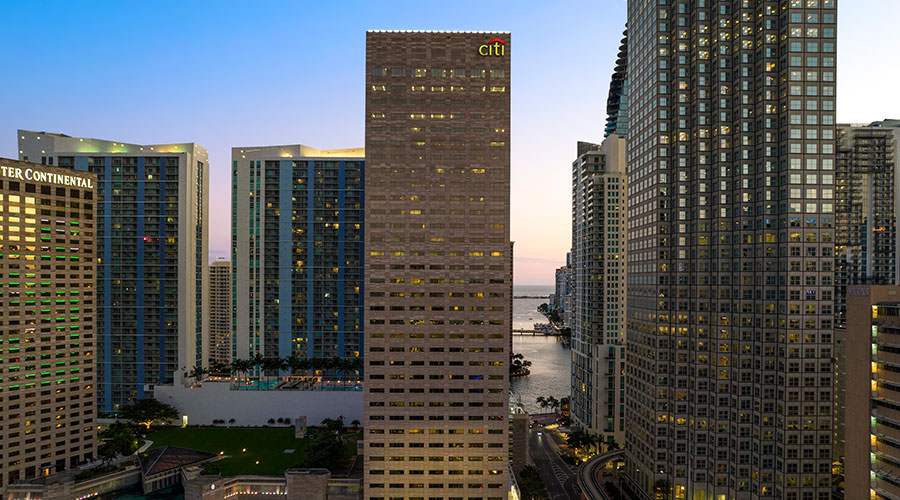 Citigroup Center
Citigroup CenterMiami Commercial Office Tower Setting Sustainability Standard
Citigroup Center is the first commercial building in U.S. to achieve LEED v5 certification.
By Dave Lubach, Executive Editor
As one of the largest commercial buildings in the Miami market, the Citigroup Center plays a significant role in the city’s iconic skyline.
In December 2024, Citigroup Center bolstered its reputation as a premier Class A office tower when the 42-year-old property became the first existing office building in the United States to achieve LEED v5 certification.
“I assist with the oversight of downtown Miami for CP Group, and this was the only (office building in the area) that did not have LEED,” says Ana Castro, general manager for CP Group, who knew the lack of the LEED designation could put the building at a competitive disadvantage when competing for tenants.
When new ownership, a joint venture between Monarch Capital, CP Group and Tourmaline, took over the building in 2021, they sought to achieve the designation. LEED v5 is the latest version of the U.S. Green Building Council’s building standard designed to create stronger and healthier buildings.
“This was a huge accomplishment, especially for the size of this building,” says Castro of the 822,000 square foot, 34-story tower. “Our ownership is committed to providing a hospitality-focused environment which requires a healthy and sustainable workplace.”
Pilot project
Though constructed over 40 years ago, new ownership sought to reposition the office tower as a “lifestyle-driven office tower with premium amenities and unmatched tenant experience,” according to a USGBC press release on LEED v5.
The building was selected to participate in the LEED v5 O+M (Operations + Maintenance) rating system as a beta test in 2023, eventually achieving LEED Silver certification in 2024. LEED v5’s certification standards were released to the public in April 2025.
LEED v5, as described on the USGBC’s website, places emphasis on three main impact areas for buildings:
- Decarbonization by targeting the reduction in operational, embodied, refrigerants and transportation emissions;
- Quality of life for building occupants by making spaces both environmentally and people friendly; and
- Ecological conservation and restoration of ecosystems.
In addition to water views, Citigroup Center is interconnected to the InterContinental Miami Hotel. The building's ownership investments into its space include hospitality-driven services such as a 9,000-square-foot tenant lounge and conference facility, an open-air lobby cafe and an incoming ground-floor indoor/outdoor restaurant operated by Vancouver-based Cactus Club Cafe.
Amenities like these were benefits under the LEED v5 credits that previously were not as well-recognized under the earlier LEED rating systems.
“The previous version of LEED v5 was much more rigidly performance-based and less a combination of performance and strategy implementation,” says Barry Abramson, principal at Servidyne, the engineering firm that consulted on the project. “That was one of the challenges for Citigroup Center under the previous version – as a building on a pathway to higher performance, it was not already a top performer across the board and couldn’t even start the LEED certification process.”
Implementing change
As the ownership team set its sights on building upgrades to improve efficiency and sustainability performance overall, they addressed opportunities to reduce energy and water use through HVAC, lighting and plumbing system upgrades.
In a multi-year phased plan, the building’s older HVAC systems are being replaced with new high efficiency equipment that uses 30 percent less energy, and LED lighting retrofits and lighting controls are reducing lighting power by 60 percent to 70 percent compared to the fluorescent lighting replaced. For water consumption, upgraded restrooms now have low-flow and low-flush fixtures that reduce water use by 60 percent to 80 percent vs. older plumbing fixtures.
But broader environmental, social and governance (ESG) factors were also considered during the process, all of which contribute to LEED v5 certification. These practices included such aspects as:
- Formulating worker safety policies and conducting satisfaction surveys
- Developing a long-term decarbonization plan that includes a roadmap for lowering the building’s carbon footprint
- Adapting to behavioral changes such as reducing water use and waste among occupants, encouraging green cleaning protocols and supporting healthier indoor environments
- Addressing resilience through emergency preparedness plans.
“One of the credits in LEED v5 that the building achieved was for having a plan in place to be prepared for wildfire smoke incidents,” Abramson says. “You’d think in Miami, there shouldn’t be a concern regarding wildfires, but nowhere is safe from smoke migration now, so having the established procedures and materials on-site, such as a full stock of replacement MERV-13 air filters, was something that was implemented as part of the process.”
An area where the Citigroup Center’s score shined was in sustainable transportation, achieving a perfect 100-for-100 score. The building sits adjacent to the Miami Metromover station and is within walking distance of the MiamiCentral Brightline station. Building occupants are also encouraged to take advantage of the walkability of the city’s downtown and its biking routes to come to work.
“We have a trolley in the Central Business District at no charge for users, which circulates within the business district,” Castro says. “The Metromover is also free of charge. We have a lot of people that commute from the north and the south, so they can take the train to the government station and then a train to different locations in downtown Miami.”
A tenant survey revealed that the employees are taking advantage of the commuting options, which helps the Citigroup Center’s LEED score.
“Citigroup Center’s location offers excellent alternative commuting options for tenants, but that’s often not enough to change habits,” says Jaiko Celka, the director of sustainability for Servidyne and the project manager for the LEED v5 certification effort. “Based on the survey results, almost 50 percent of the respondents were using some form of sustainable transportation, whether that’s public transportation, carpooling, biking, or walking. That’s a pretty big feat for any building because most people drive to work by themselves. Encouraging sustainable commuting practices was a significant component of the project.”
Certification challenges
One of the prerequisites in LEED v5 is to document how much outdoor air is coming into the building, which was a challenge at Citigroup Center with nearly 80 separate air-handling systems throughout the building. Although this required a significant effort, it was well worth it, as it enabled adjustments on various floors to optimize the outdoor air delivery to ensure proper ventilation while not wasting energy.
A tenant satisfaction survey reported a 97 percent approval rating for the quality of the indoor environment.
Another challenge was due to the electric metering configuration at Citigroup Center, with many tenants having their own direct utility accounts, unusual for the Miami office market. The electric utility was just beginning to offer whole-building aggregated data to customers which was required for LEED tracking.
“Once we got to the right people, they were very helpful in providing that data on an ongoing basis,” Abramson says. “They were still working out significant kinks in the automated process.”
While the building has achieved its LEED v5 certification goal, the work continues for the facilities team to continue to achieve more.
The process was never meant to be an immediate facelift of an 822,000-square-foot behemoth of a building, but a plan to approach the project thoughtfully and carefully to achieve steady progress over the long haul.
“This recognition is not the finish line,” Castro says. “It’s a challenge and an invitation to continue to push and to demonstrate that sustainable practices are not a burden, but an opportunity. An opportunity to strengthen communities, improve lives.”
Dave Lubach is the executive editor for the facilities market. He has more than 10 years of experience writing about facility management and maintenance issues.
Related Topics:







